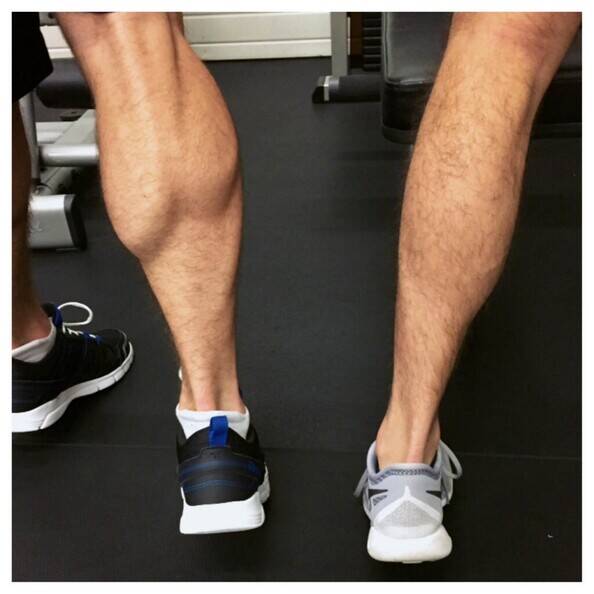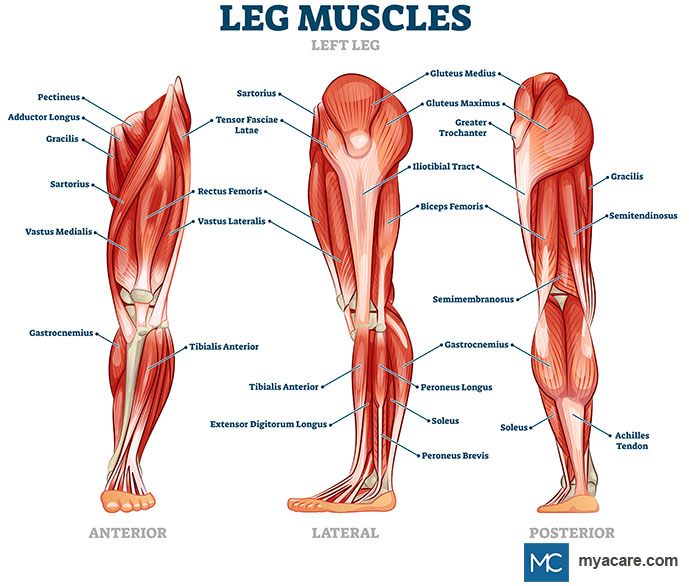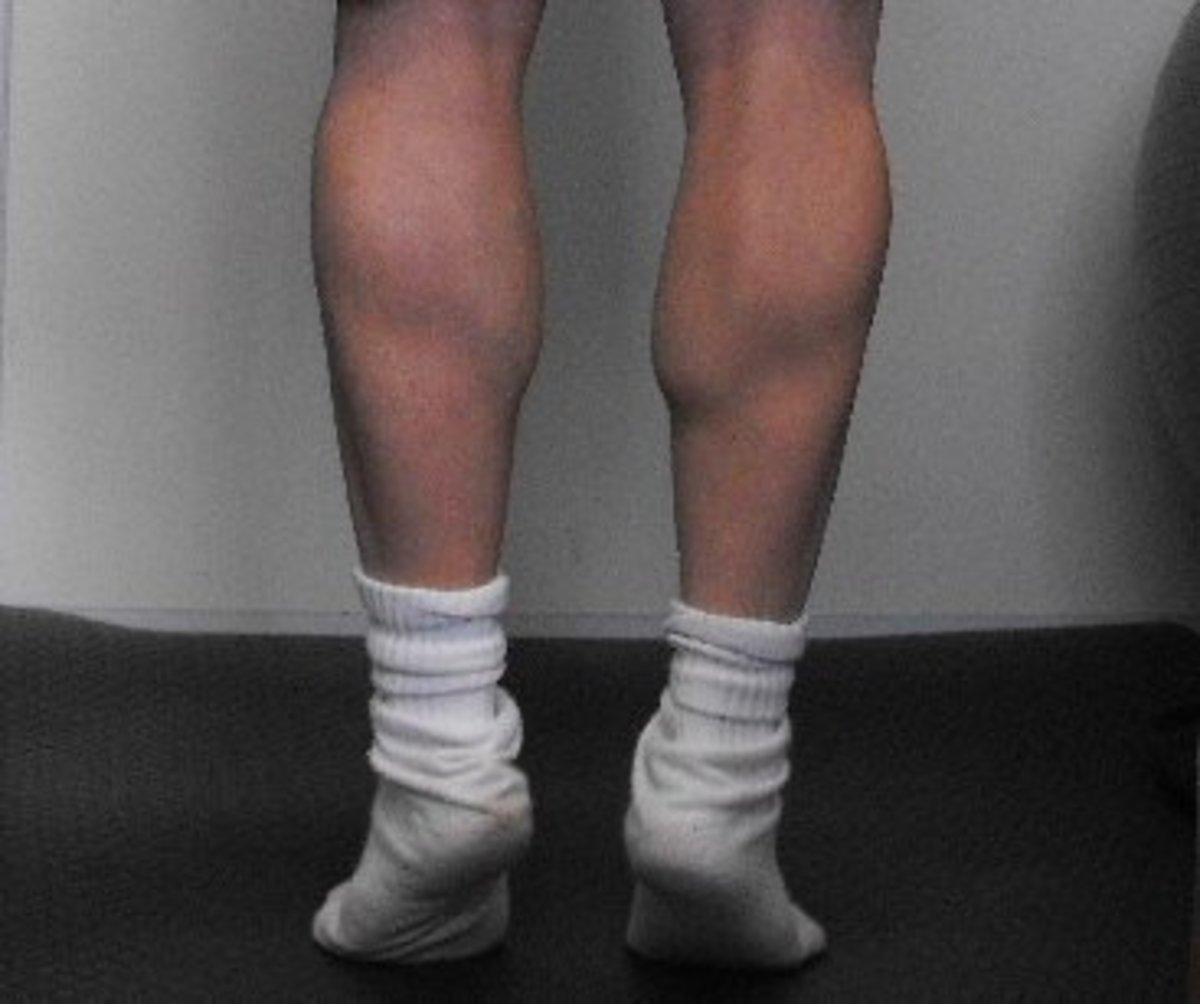The Role of Genetics in Calf Muscle Size
Genetics can significantly influence the size of a person’s calf muscles. Our genetic makeup determines the number and type of muscle fibers we have, which can impact muscle growth. There are two main types of muscle fibers: slow-twitch (type I) and fast-twitch (type II). Slow-twitch fibers are smaller and primarily used for endurance activities, while fast-twitch fibers are larger and used for powerful, explosive movements. Individuals with a higher proportion of fast-twitch fibers in their calves may naturally have larger calf muscles.
Impact of Physical Activity on Calf Muscle Size
Physical activity, especially exercises that involve running or jumping, can significantly contribute to larger calf muscles. Regular exercise helps stimulate muscle growth through two primary mechanisms: hypertrophy and hyperplasia. Hypertrophy refers to the increase in the size of existing muscle fibers, while hyperplasia involves an increase in the number of muscle fibers. Although hypertrophy is more commonly observed in humans, both processes can contribute to the growth of calf muscles.
Exercises that target the calf muscles, such as calf raises, heel drops, and jumping exercises, can effectively stimulate muscle growth. Engaging in a consistent exercise routine that includes these movements can lead to noticeable increases in calf muscle size over time. However, it is essential to remember that muscle growth is a gradual process that requires patience, consistency, and proper nutrition.
Potential Influence of Diet on Calf Muscle Size
Nutrition plays a crucial role in muscle growth, including the size of calf muscles. Consuming a balanced diet with adequate amounts of protein, carbohydrates, and other essential nutrients is vital for supporting muscle development and recovery. Protein, in particular, is essential for muscle growth, as it provides the building blocks (amino acids) necessary for muscle repair and synthesis.
While there is no specific “calf muscle diet,” ensuring that your overall nutritional intake supports muscle growth is essential. Consuming a variety of protein sources, such as lean meats, poultry, fish, eggs, dairy products, legumes, and nuts, can help meet your daily protein needs. Additionally, incorporating complex carbohydrates, healthy fats, and a wide range of fruits and vegetables into your diet can provide the energy and nutrients necessary for muscle growth and overall health.
Supplements, such as protein powders or creatine, may also play a role in muscle development. Protein powders can help increase protein intake, particularly for those who struggle to consume enough protein through whole foods alone. Creatine, on the other hand, has been shown to enhance muscle strength and size by increasing the availability of energy within muscle cells. However, it is essential to consult with a healthcare professional or registered dietitian before incorporating supplements into your routine to ensure safety and effectiveness.
The Relationship Between Age and Calf Muscle Size
Muscle mass and size can change as a person ages, which may impact the size of calf muscles. As people grow older, they naturally lose muscle mass and strength due to a variety of factors, including hormonal changes, decreased physical activity, and a decline in muscle protein synthesis. This phenomenon, known as sarcopenia, typically begins in one’s 30s and progresses throughout adulthood, leading to a decline in overall muscle health and function.
Maintaining muscle health and strength throughout one’s life is crucial for overall well-being, mobility, and independence. Engaging in regular resistance training, consuming a balanced diet, and ensuring adequate protein intake can help slow the progression of sarcopenia and support muscle growth, even in older adults. However, it is essential to remember that muscle growth may occur at a slower pace as people age, and it may take longer to see noticeable changes in muscle size, such as calf muscles.
How to Assess Calf Muscle Size and Symmetry
Assessing calf muscle size and symmetry is essential for monitoring muscle development and ensuring balanced muscle growth. Various methods can be used to measure calf muscle size, including circumference measurements, ultrasound imaging, and magnetic resonance imaging (MRI). Here, we will focus on practical and accessible techniques for self-assessment.
Using a Tape Measure
To measure calf muscle circumference, follow these steps:
- Sit or stand with your legs straight and feet flat on the floor.
- Locate the largest part of your calf muscle, typically halfway between your knee and ankle.
- Wrap a flexible tape measure around your calf at this point, ensuring it is level and not too tight.
- Record the measurement in centimeters or inches.
Repeat this process for both calves to assess symmetry. Comparing these measurements over time can help you monitor changes in muscle size and identify any imbalances that may require attention.
Using Calipers
Skinfold calipers can also be used to estimate muscle size by measuring subcutaneous fat thickness. While this method is less direct than circumference measurements, it can still provide valuable insights into overall muscle development.
To use calipers for calf muscle assessment, follow the steps below:
- Locate the same point on your calf as described in the tape measure method.
- Pinch the skin and underlying fat layer with your fingers, then position the caliper jaws on the pinched skin.
- Record the measurement after the caliper reading stabilizes, typically within a few seconds.
- Repeat this process for the other calf and compare the results.
By incorporating these assessment techniques into your fitness routine, you can better understand the size and symmetry of your calf muscles, allowing you to make informed decisions about your exercise and nutrition strategies.
Considerations for Addressing Disproportionately Large Calf Muscles
While having well-developed calf muscles can be a sign of physical fitness and strength, some individuals may experience discomfort or difficulty finding properly fitting footwear due to larger calf muscles. This section will discuss potential concerns related to having larger calf muscles and offer suggestions for addressing these issues.
Discomfort and Pain
Disproportionately large calf muscles can sometimes lead to discomfort or pain, especially during physical activities that involve extensive plantar flexion (pointing your toes) or dorsiflexion (lifting your toes). To alleviate discomfort, consider incorporating the following strategies into your routine:
- Stretching: Regularly stretching your calf muscles can help maintain flexibility and reduce the risk of injury or pain.
- Strengthening: Focus on strengthening exercises that target the muscles surrounding the calf muscles, such as the hip abductors and adductors, to improve overall lower body stability and balance.
- Cross-training: Engage in various forms of exercise to ensure that you’re not overloading your calf muscles and to promote balanced muscle development.
Finding Properly Fitting Footwear
Individuals with larger calf muscles may struggle to find footwear that fits comfortably, particularly when it comes to boots or other footwear with a snug calf fit. To address this issue, consider the following suggestions:
- Measure your calf circumference: Use a flexible tape measure to determine your calf circumference at the widest point. This information can help you select footwear with a calf fit that accommodates your muscle size.
- Look for adjustable features: Opt for footwear with adjustable elements, such as laces, zippers, or buckles, which can provide a more customized fit.
- Consider boots with a wider calf opening: Some boot manufacturers offer models with a wider calf opening, which can make it easier to insert and remove the footwear.
- Seek professional assistance: Visit a specialty footwear store where knowledgeable staff can help you find footwear that fits your unique needs and preferences.
By addressing potential concerns related to larger calf muscles, you can ensure that your physical activity remains comfortable, safe, and enjoyable.
When to Consult a Medical Professional About Calf Muscle Size
While having larger calf muscles is generally not a cause for concern, there are certain circumstances under which it may be appropriate to consult a healthcare provider about calf muscle size. Here, we will discuss the situations in which seeking medical advice is recommended and provide guidance on how to prepare for a medical appointment and what to expect during the consultation.
Sudden or Unexplained Changes in Muscle Size
If you notice a sudden or unexplained increase in calf muscle size, it is essential to consult a healthcare professional. This could be a sign of an underlying medical condition, such as a tumor or blood clot, which requires proper evaluation and treatment.
Persistent Pain or Discomfort
If you experience persistent pain or discomfort in your calf muscles, even after implementing strategies to address discomfort and pain, it is advisable to seek medical advice. A healthcare provider can help determine the cause of your pain and recommend appropriate treatment options.
Preparing for a Medical Appointment
When preparing for a medical appointment, consider the following steps:
- Document your symptoms: Keep a record of any changes in your calf muscles, including size, pain, or discomfort. This information can help your healthcare provider better understand your concerns and make an accurate diagnosis.
- Gather your medical history: Be prepared to share your medical history, including any past injuries, illnesses, or surgeries that may be relevant to your calf muscles.
- Create a list of questions: Write down any questions or concerns you have about your calf muscles, so you can ensure they are addressed during the appointment.
What to Expect During the Consultation
During the consultation, your healthcare provider will likely perform a physical examination and review your medical history. They may also order additional tests, such as imaging studies or blood tests, to help determine the cause of any changes in your calf muscles. Based on their findings, they will recommend appropriate treatment options or refer you to a specialist if necessary.
By understanding when to consult a medical professional about calf muscle size, you can ensure that any potential concerns are addressed promptly and effectively.
Maintaining Healthy Calf Muscles: Prevention and Care
Maintaining healthy calf muscles is essential for overall lower leg strength, mobility, and injury prevention. By incorporating regular stretching, strengthening, and cross-training into your fitness routine, you can promote balanced calf muscle development and ensure long-term muscle health. Here, we will offer tips for maintaining healthy calf muscles, emphasizing the importance of proper warm-up and cool-down routines and the value of seeking professional guidance when needed.
Regular Stretching
Stretching your calf muscles regularly can help maintain flexibility, reduce the risk of injury, and alleviate muscle soreness. Consider incorporating the following stretches into your routine:
- Downward-facing dog: Begin on your hands and knees, then lift your hips and straighten your legs, forming an inverted V shape. Gently press your heels toward the ground and hold for 20-30 seconds.
- Standing calf stretch: Stand facing a wall, place your hands on the wall, and step one foot back, keeping your back leg straight and your heel on the ground. Lean forward, keeping your back straight, and hold for 20-30 seconds. Repeat on the other side.
Strengthening Exercises
Strengthening your calf muscles can help improve lower leg stability, balance, and power. Consider adding the following exercises to your routine:
- Calf raises: Stand on the edge of a step with your heels hanging off the edge. Slowly rise up onto your toes, then lower your heels below the step. Perform 2-3 sets of 10-15 repetitions.
- Jump rope: Incorporate jump rope exercises into your cardio routine to engage your calf muscles and improve lower leg endurance.
Cross-Training
Engaging in various forms of exercise can help ensure that you’re not overloading your calf muscles and promote balanced muscle development. Consider incorporating activities such as swimming, cycling, or yoga into your fitness routine to challenge your calf muscles in different ways.
Proper Warm-Up and Cool-Down Routines
Always remember to warm up your calf muscles before engaging in physical activity and cool them down afterward. A proper warm-up can help increase blood flow, reduce the risk of injury, and prepare your muscles for exercise. A cool-down can help reduce muscle soreness and promote recovery.
Seeking Professional Guidance
When in doubt, consult with a fitness professional or healthcare provider to ensure that your calf muscle maintenance routine is safe, effective, and tailored to your individual needs and goals.
By following these tips for maintaining healthy calf muscles, you can promote balanced muscle development, reduce the risk of injury, and ensure long-term muscle health.








